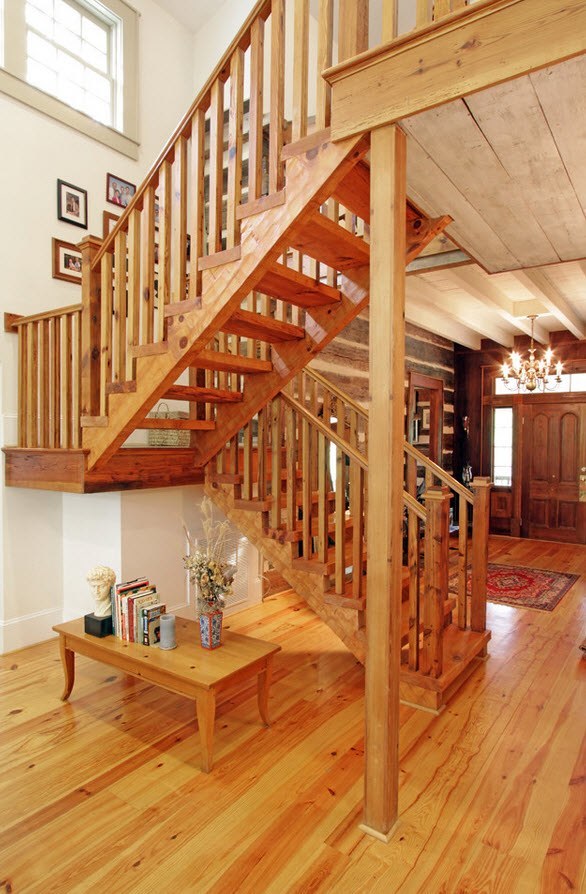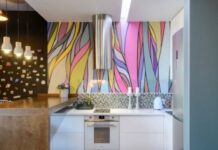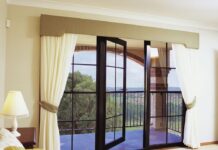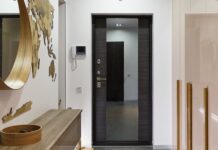In a country house, the staircase is an extremely important structural element. Which not only allows the owners to get from the first floor to the second, but also to do it with maximum comfort, safety and convenience. That is why a lot of factors must be taken into account when designing and installing stairs. It is necessary to think about what type of staircase will be, what materials it will be made of, how it will be decorated, at the design stage of construction.
The modern market for the production and assembly of stairs offers many options – in various styles and modifications. But after all, among the many models presented, you can probably find a high-quality and durable design that will serve you and your household for many years faithfully.
We choose a staircase by construction and design
The advantage of choosing the design and features of the stairs at the stage of construction of the house has a number of distinctive features. If you have planned in advance the size, location and type of construction of the stairs, then it will be much easier for you to harmoniously and safely fit it into the finished room.
Если загородный дом достаточно большой или его архитектура настолько сложна, что требуется две лестницы, то необходимо заранее продумать их расположение и распределить возможные роли. Вам нужно будет определиться с тем, хотите ли вы, чтобы лестница стала фокусным центром помещения или занимала как можно меньше места и лишь исправно выполняла возложенный на нее функционал.
Having planned in advance not only the type of staircase structure, but also its decoration, décor, you will have the opportunity to monitor the cost of various types of services and construction, finishing materials in order to save money.
First, let’s decide on the design and design of the stairs. Classic marching models are one of the most popular, easy-to-install and operate options. But such models take up a lot of useful space and may not be suitable for all households. If your country home is more of a country house, then it is better to choose a swivel staircase with right angles and running steps. Spiral and curved stairs also take up less space, but their manufacture is more difficult and expensive.
As for the design of the future staircase, in this case there is no limit to the possibilities, everything is limited only by the allocated budget for the project. The main thing is to decide whether you want the design of the staircase to coincide with the overall style of the interior of the room or stand out, becoming not just an accent of the space, but also its focal center? It’s up to you to decide whether your steps will be straight, rounded or irregularly shaped, the railing will be made of the same material or be an original combination of what shape and size your railing will be.
Try to think in advance about the design of the space under the stairs. Will you have a small pantry or shelving with open shelves there, or maybe you plan to use the walls under the stairs as a reading corner?
The resulting nook of space, fenced with the base of the stairs, can be used as a built-in storage system of one or another modification, or you can simply place a resting place there in the form of an armchair with a small table-stand. And if you add a floor or table lamp, then in such a cozy place you can read a book with comfort.
It is better to solve the issue of lighting at the planning stage. Of course, the number and type of lamps will depend on the size and location of the stairs. Some homeowners have enough wall sconces and a central chandelier, others plan to illuminate the steps for greater safety in the dark.
Illumination of steps with LED strips will not only ensure the safety of your movement on the stairs in the dark, but also effectively highlight the original design or bright décor of the risers.
Which stylistic direction to choose?
The style of the staircase will largely depend on the design of the room. But country houses are different for everyone, someone prefers country style and all its attributes, which cannot but affect the manufacture of stairs. For others, it is important not to deviate from modern trends outside the city, and this cannot but affect the choice of building and finishing materials. And there is a considerable sector of homeowners who, under any conditions, choose timeless classics.
For country houses, as well as for urban private households, the following styles of stairs are most often used:
- classics – simplicity and conciseness of the design, sophistication and nobility of decoration (stucco, carving, décor elements made of marble or other natural stone can be used for such stairs);
- vintage – a staircase, no matter what material it is made of, is artificially aged;
- High-tech – materials such as stone, plastic, glass and metal are used. The stairs have a technological appearance with a bias towards industriality;
- loft – metal is actively used, sometimes combinatorics of different alloys, a combination of painted elements and stainless steel;
- Provence – a staircase made of wood is painted completely or partially white, carpets are often used (if the painting is cracked, and the carpet with scuffs is only welcome, it creates a slight touch of antiquity).
We choose a ladder based on the material of the structure
The first thing that comes to mind for most owners of a suburban dwelling who are faced with the choice of material for the construction of stairs is wood. In fact, what could be more organic and logical than a staircase made of natural material in a house outside the city? But there are many other building materials that can, both independently and in combination with each other, compete with wooden stairs.
A wooden staircase is the most popular option for a country house
In private city or country houses, country houses and hunting lodges, stairs made of wood in whole or in part are most often used. Qualities such as reliability, strength, durability, attractive appearance and environmental friendliness encourage a large number of homeowners to give preference to this natural material.
The design of a wooden staircase, as a rule, includes:
- landing;
- one or more marches;
- steps and risers (degrees are ordinary and run-in – placed on turns. These designs can be of different geometric shapes. For example, running steps may have a concave riser in an arc;
- bowstring or kosoura – load-bearing side elements of the stairs (divided according to the methods of fastening the steps)
- railings or handrails help to carry out the safe movement of a person on the stairs (may or may not be);
- Props are pillars or piles that serve as a support for the entire structure (due to differences in design features, props can be hidden).
Two-flight stairs are considered the safest. As a rule, the height of the floor in a private house allows you to ergonomically place exactly two flights of stairs. The recommended width of the wooden staircase should not be less than 0.8 m, the optimal depth of the steps is 0.3 m, and the height of the steps is 0.15 m.
A wooden staircase with a railing made of branches or thick tree trunks, properly processed, creates an incredibly unique experience. The hallway room is transformed, becoming more focused on country style. If you add to this original composition also facing with ceramic tiles of the space under the steps or risers, then the image turns out to be truly unique.
A wooden staircase with beautiful wrought iron railings is a luxurious option for a country house of impressive size. Style and nobility, power and grace – everything is harmoniously combined in such a design.
A staircase with wooden steps, which are attached exclusively to the wall, gives the impression of a structure hanging in the air. Of course, such design solutions can only be implemented at the construction stage. It will not be possible to fit such a design into the finished room.
If you put the carpet on the stairs, you will save yourself and your family members from possible slips, and therefore from the likelihood of falling. But do not forget about the special restraining strips for the carpet. As a rule, they are made of sufficiently durable metal.
The wooden staircase, made in the same color scheme with the main decoration, the room looks incredibly organic and balanced. Elegant carved railings and carpeting to match complete the sophisticated look.
A wooden staircase located against the wall takes up the minimum possible amount of possible space. But the use of the structure without railings on both sides is possible only in houses where there are no small children or the elderly.
Rounding the corners of the first stage will avoid collisions and unpleasant injuries. Especially such precautions apply to owners of houses in which there are small children who love to run and bump into all corners.
In foreign private houses, we most often see a contrasting design of stairs – steps with a natural wood shade, combined with the snow-white design of risers. The railing in this case can be either completely white or also contain a combination of two shades. This color scheme allows the staircase to look elegant, festive, raise the degree of the entire room.
Another interesting color scheme for the design of the stairs is the combination of wood shades of the steps with black elements of the railings and supports of the structure. Such a design can be suitable for many stylistic directions in which your premises can be made.
Concrete stairs – pros and cons of structures
Obviously, a concrete staircase is a practical, durable and durable option. A concrete staircase will not wobble, creak and is quite calm about the effects of moisture. High resistance to heavy loads, temperature extremes and ease of care have earned the respect of many owners of private houses. In addition, concrete structures allow you to implement almost any design ideas, even the most sophisticated.
At a relatively low cost of building material, you can get a durable and original staircase that will serve more than one generation of the family. This is perhaps the best option in terms of price-quality ratio. But as usual, any structural element has disadvantages in addition to advantages. Concrete structures are quite complex in execution and installation, and always take up a lot of space. But these minor shortcomings are easily compensated by high performance and attractive appearance.
















































